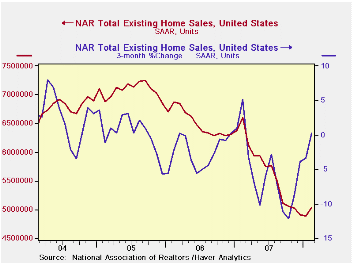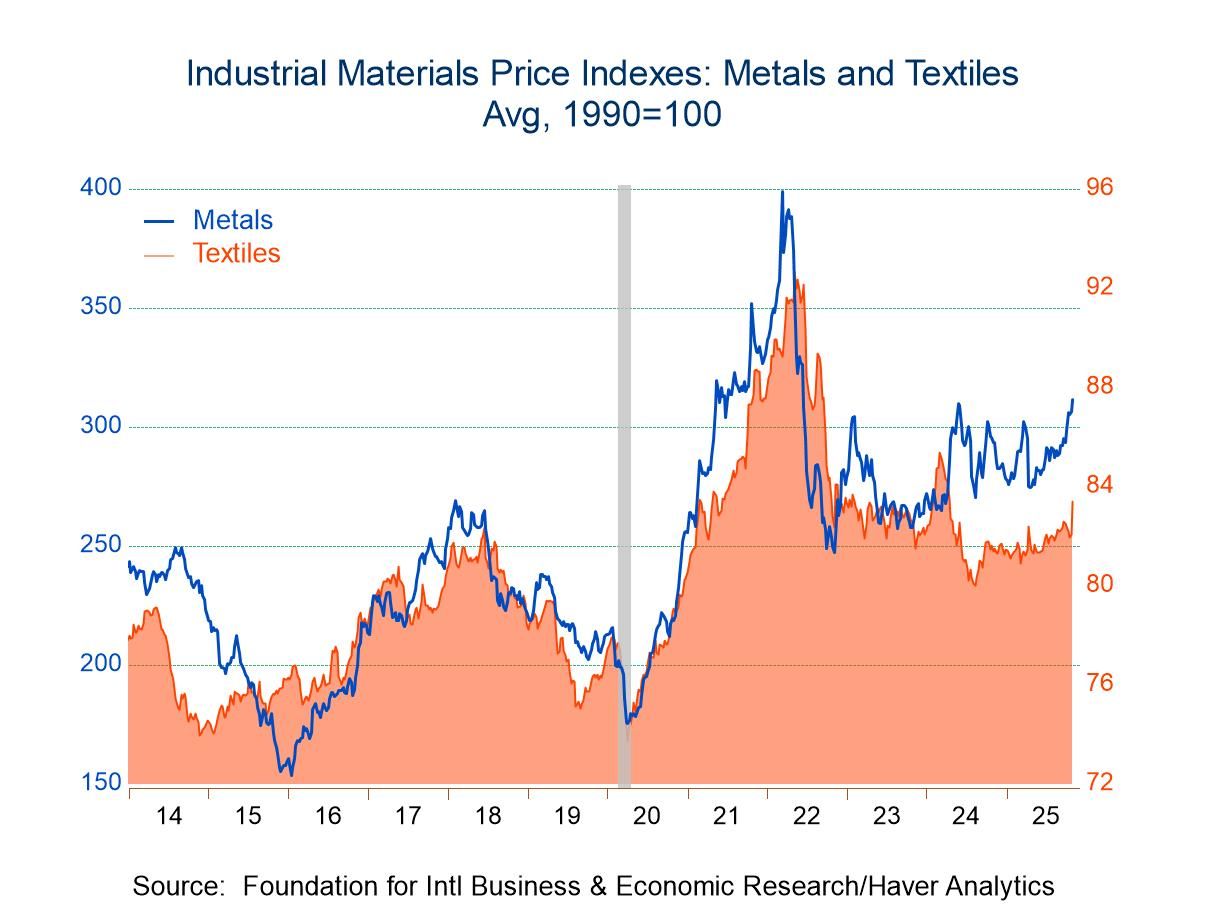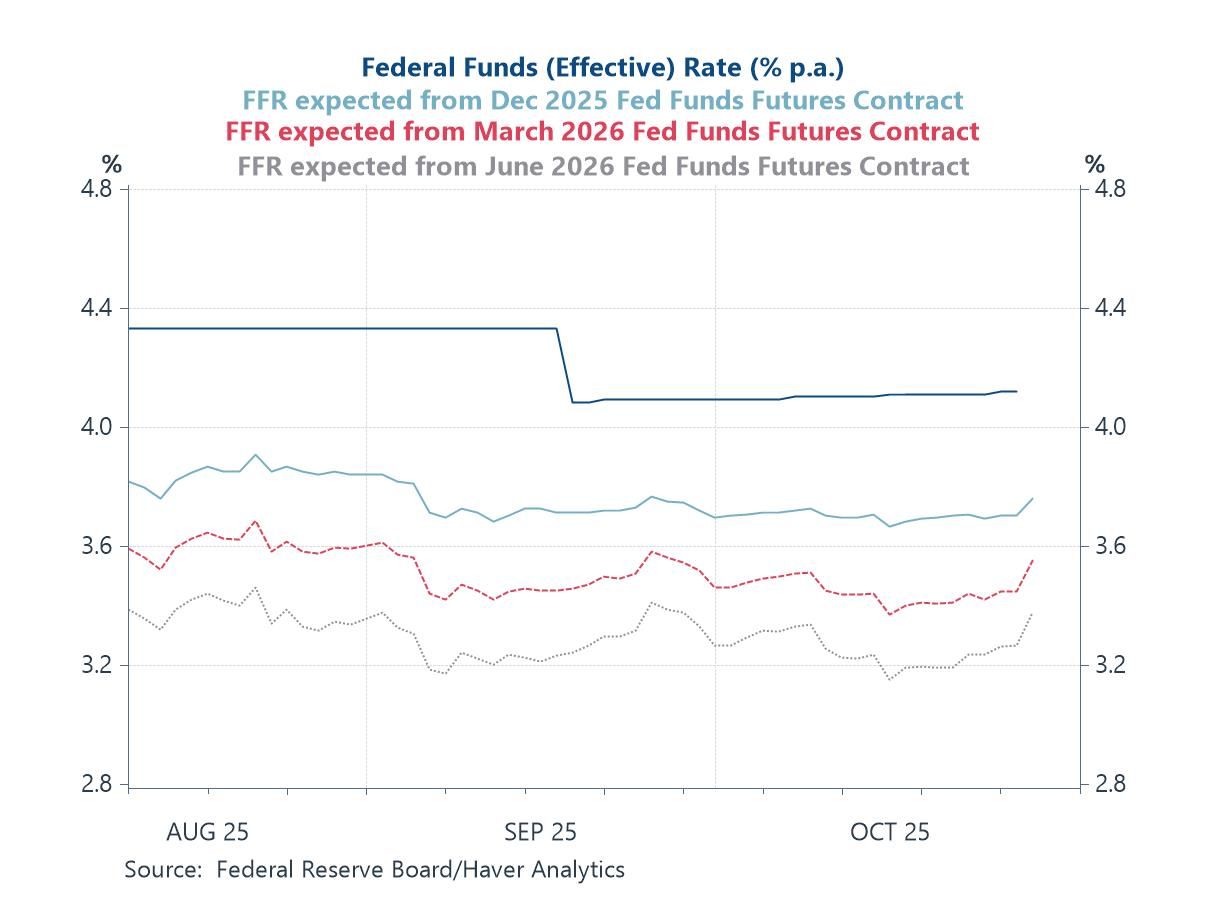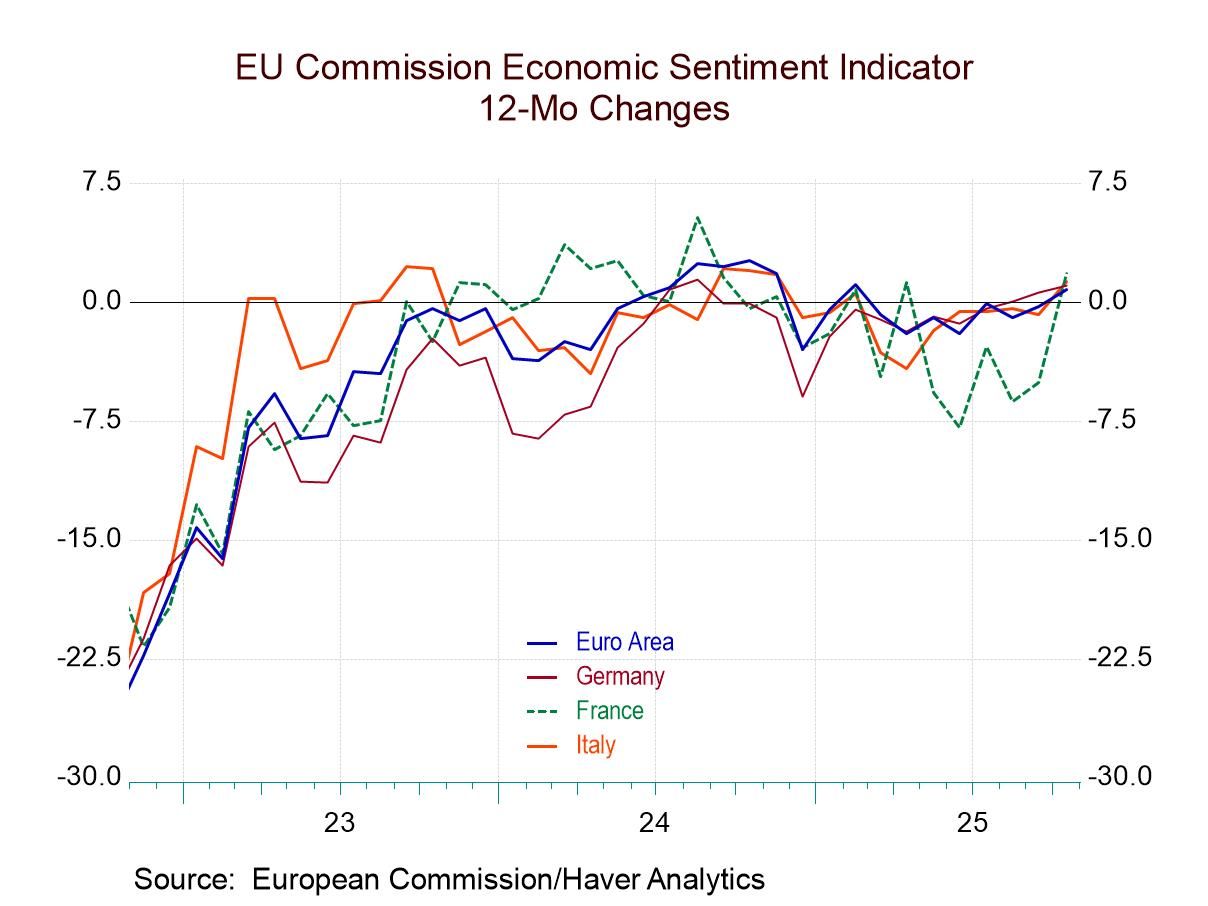 Global| Mar 24 2008
Global| Mar 24 2008U.S. Existing Home Sales Rose Slightly. Momentum Changing?
by:Tom Moeller
|in:Economy in Brief
Summary
According to the National Association of Realtors, existing home sales in February rose 2.9% m/m to 5.030M from an unrevised January level which fell 0.4%. The rise contrasted with Consensus expectations for a slight decline. There [...]

According to the National Association of Realtors, existing home sales in February rose 2.9% m/m to 5.030M from an unrevised January level which fell 0.4%. The rise contrasted with Consensus expectations for a slight decline.
There has been, however, a change from past sales patterns. The downward momentum behind last year's declines in home sales has flattened out. Home sales were essentially unchanged during the last three months following double digit rates of decline during all of last year.
Sales of existing single family homes also rose by 2.8% last month and that followed a 0.7% January uptick.
By region, February home sales in the Northeast rose 11.3% (-26.4% y/y) and recouped all of the declines during the prior two months. In the Midwest February sales rose 2.5% for the second consecutive monthly increase while sales in the South rose a modest 2.1%. That flattening pattern even extends out West. Though sales fell 1.1% in February, the three month rate of decline moderated to -5.2% from -21.4% as of last October.
A flattening of last year's price decline, however, has not occurred. The median price of an existing home fell 1.9% (-8.2% y/y) last month after a downwardly revised 5.3% January drop. Home prices were off 14.5% in February from their peak last June.
The number of unsold homes on the market continued to fall last month. The 3.0% m/m decline pulled the stock down 11.6% from the peak last July. At the current low sales rate, however, that inventory still amounts to a 9.6 months supply which is barely down from last year's peak. For single family homes there is a 9.2 months supply at the current sales rate and for condos and co-ops there is a 13.0 months supply.
Walking a tightrope into 2008 from the Federal Reserve Bank of St. Louis can be found here.
| Existing Single Family Home Sales (Thous) |
February | y/y % | January | February '07 | 2007 | 2006 | 2005 |
|---|---|---|---|---|---|---|---|
| Total | 5,030 | -23.8 | 4,890 | 6,600 | 5,672 | 6,508 | 7,076 |
| Northeast | 890 | -26.4 | 800 | 1,210 | 1,008 | 1,090 | 1,168 |
| Midwest | 1,240 | -19.5 | 1,210 | 1,540 | 1,331 | 1,491 | 1,589 |
| South | 1,990 | -22.0 | 1,950 | 2,550 | 2,240 | 2,576 | 2,704 |
| West | 920 | -29.2 | 930 | 1,300 | 1,093 | 1,353 | 1,617 |
| Single-Family | 4,470 | -22.9 | 4,350 | 5,590 | 4,958 | 5,703 | 6,181 |
| Median Price, Total, $ | 195,900 | -8.2 | 199,7000 | 213,500 | 216,617 | 222,000 | 218,217 |
Tom Moeller
AuthorMore in Author Profile »Prior to joining Haver Analytics in 2000, Mr. Moeller worked as the Economist at Chancellor Capital Management from 1985 to 1999. There, he developed comprehensive economic forecasts and interpreted economic data for equity and fixed income portfolio managers. Also at Chancellor, Mr. Moeller worked as an equity analyst and was responsible for researching and rating companies in the economically sensitive automobile and housing industries for investment in Chancellor’s equity portfolio. Prior to joining Chancellor, Mr. Moeller was an Economist at Citibank from 1979 to 1984. He also analyzed pricing behavior in the metals industry for the Council on Wage and Price Stability in Washington, D.C. In 1999, Mr. Moeller received the award for most accurate forecast from the Forecasters' Club of New York. From 1990 to 1992 he was President of the New York Association for Business Economists. Mr. Moeller earned an M.B.A. in Finance from Fordham University, where he graduated in 1987. He holds a Bachelor of Arts in Economics from George Washington University.






